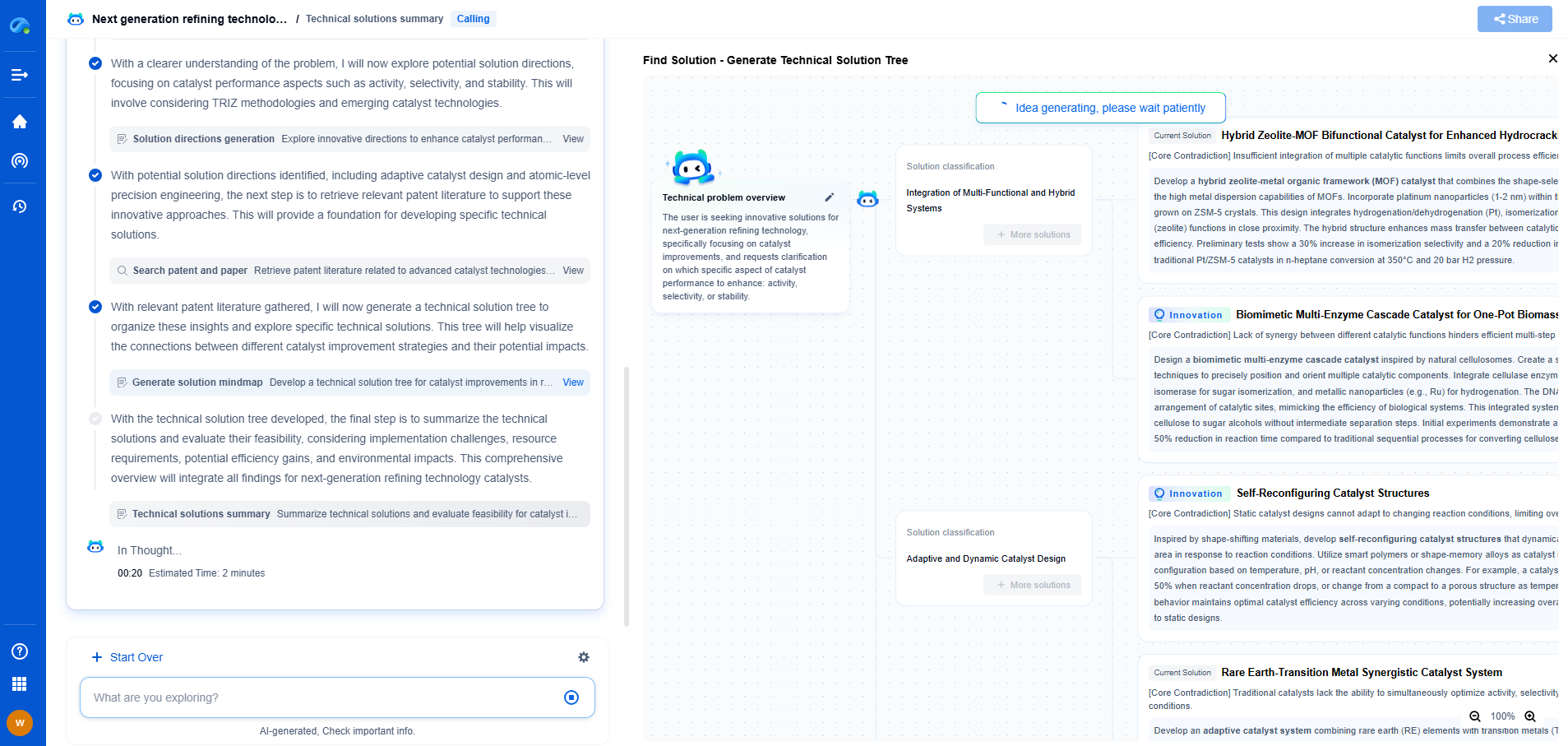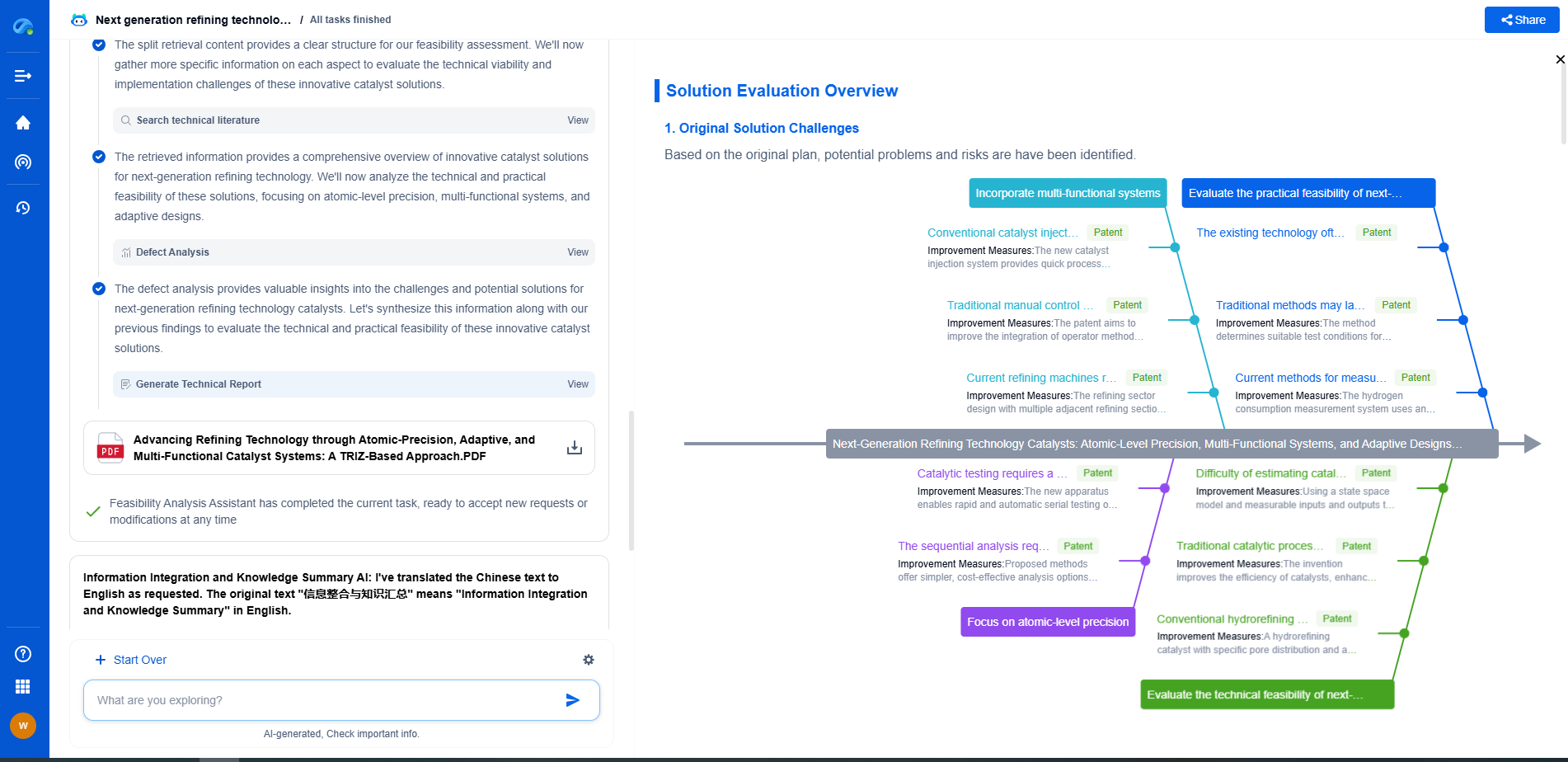What is payload capacity in robots?
JUN 26, 2025 |
Introduction to Payload Capacity
Robots are increasingly becoming an integral part of various industries, from manufacturing and healthcare to logistics and agriculture. As their roles expand, understanding key specifications like payload capacity becomes crucial. Payload capacity refers to the maximum weight a robot can carry or manipulate while performing its tasks effectively. This parameter is vital for ensuring safety, efficiency, and productivity in robotic applications.
The Significance of Payload Capacity
In the context of robotics, payload capacity is not just about lifting heavy objects; it's about precision, performance, and operational efficiency. A robot's payload capacity determines its suitability for specific tasks. For instance, in an automotive assembly line, a robot with a high payload capacity might be needed to handle car doors or engines. In contrast, a robot with a lower payload capacity could be ideal for tasks requiring delicate handling, such as assembling electronic components.
Factors Affecting Payload Capacity
Several factors influence a robot's payload capacity. One primary factor is the robot's design and structure. Industrial robots, for example, are typically designed with robust materials and have powerful motors to handle heavier payloads. The size of the robot also plays a role; larger robots often have higher payload capacities.
Another factor is the type of robotic arm or end-effector used. Different end-effectors are designed for specific tasks and payloads, impacting the overall capacity. Furthermore, the robot's operating environment can influence its payload capacity. Robots operating in controlled environments like factories may have different requirements compared to those working in outdoor or hazardous conditions.
Balancing Payload and Reach
When determining a robot's suitability for a task, it's important to balance payload capacity with reach. Reach refers to the range within which a robot can effectively operate. A robot with a high payload capacity but limited reach might not be suitable for tasks requiring extended range, and vice versa. Manufacturers often provide payload-reach charts to help users find the optimal combination of these two factors for their specific needs.
Impact on Safety and Maintenance
Operating a robot beyond its specified payload capacity can lead to several issues, including mechanical failure, reduced performance, and safety hazards. Overloading a robot may cause excessive wear and tear, leading to frequent maintenance and potential downtime. It's essential to adhere to the manufacturer's guidelines and regularly inspect the robot to ensure it operates within its defined limits. Investing in training for operators can also help maintain safe and efficient use of robotic systems.
Advancements in Payload Capacity
With technological advancements, the payload capacities of robots are continually improving. Innovations in materials, such as lightweight composites, allow for stronger yet lighter robotic arms. Enhanced motor technologies and control systems also contribute to increased payload capacities without compromising speed or precision. These advancements open up new possibilities for robots to undertake more diverse and complex tasks across different industries.
Conclusion
Payload capacity is a critical consideration in the deployment and operation of robots. Understanding its implications helps in selecting the right robot for the job, ensuring safety, and optimizing productivity. As technology evolves, we can anticipate even greater enhancements in payload capabilities, further expanding the potential applications of robots in various sectors. Whether in performing heavy-duty industrial tasks or delicate surgical procedures, the importance of payload capacity in robotics cannot be overstated.
Ready to Redefine Your Robotics R&D Workflow?
Whether you're designing next-generation robotic arms, optimizing manipulator kinematics, or mining patent data for innovation insights, Patsnap Eureka, our cutting-edge AI assistant, is built for R&D and IP professionals in high-tech industries, is built to accelerate every step of your journey.
No more getting buried in thousands of documents or wasting time on repetitive technical analysis. Our AI Agent helps R&D and IP teams in high-tech enterprises save hundreds of hours, reduce risk of oversight, and move from concept to prototype faster than ever before.
👉 Experience how AI can revolutionize your robotics innovation cycle. Explore Patsnap Eureka today and see the difference.
- R&D
- Intellectual Property
- Life Sciences
- Materials
- Tech Scout
- Unparalleled Data Quality
- Higher Quality Content
- 60% Fewer Hallucinations
Browse by: Latest US Patents, China's latest patents, Technical Efficacy Thesaurus, Application Domain, Technology Topic, Popular Technical Reports.
© 2025 PatSnap. All rights reserved.Legal|Privacy policy|Modern Slavery Act Transparency Statement|Sitemap|About US| Contact US: help@patsnap.com

